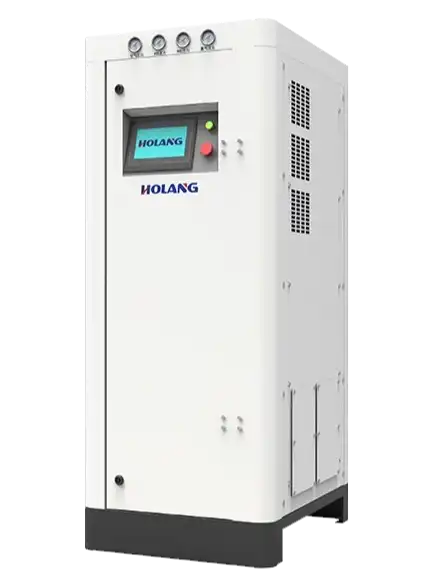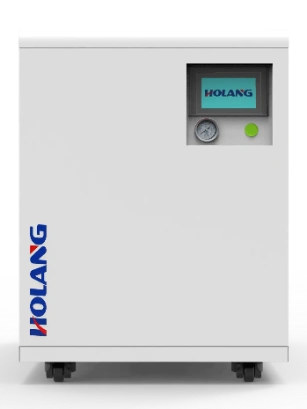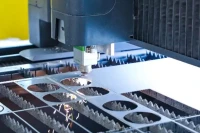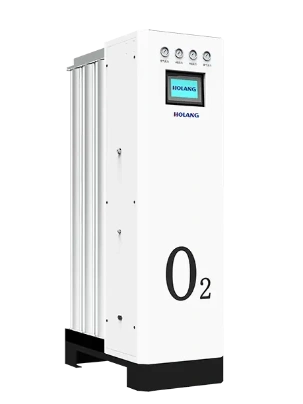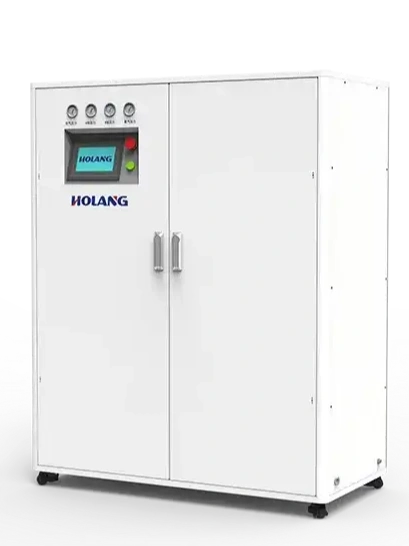The automotive industry entered the fourth quarter with a clear increase in production activity. Electric-vehicle (EV) manufacturers, PACK assembly lines, welding units and upstream suppliers raised their output to meet strict delivery targets. As production accelerated, factories relied more heavily on stable nitrogen supply to maintain process stability, production continuity and atmosphere control across several critical operations.
Nitrogen supports many steps in EV manufacturing, including chamber purging, leak testing, welding protection, controlled atmospheres, surface treatment and electronic-module testing. During high-load periods, nitrogen flow and pressure must stay consistent to prevent takt loss and quality variation. This report outlines how nitrogen demand changed in Q4 and why nitrogen systems became essential to meeting rising EV production requirements.
1. How PACK Assembly Growth Raises Nitrogen Supply Requirements
PACK assembly experienced one of the strongest increases in production demand during Q4. Factories shortened cycle times, added shifts and operated more parallel workstations.
More Purge Cycles During High EV Production
PACK enclosures must maintain a clean and controlled atmosphere before sealing. When production increased:
-
purge cycles became more frequent,
-
oxygen and humidity thresholds tightened,
-
recovery time between batches shortened.
These conditions required a more stable nitrogen supply to keep the PACK environment within specification.
Leak Testing Relies on Consistent Nitrogen Pressure
Leak testing stations depend on stable nitrogen flow. During faster takt:
-
pressure dips produced inconsistent readings,
-
retests increased,
-
downstream assembly slowed.
To support production continuity, PACK teams monitored nitrogen pressure throughout each shift rather than relying on daily checks.
This shift reflects the broader trend across the automotive industry: nitrogen stability directly influences PACK takt time during Q4.
2. Why Welding Operations Depend on Stable Nitrogen Supply
Welding stations increased output as Q4 orders rose. Nitrogen functioned both as a shielding gas and as a stabilizing atmosphere for pre-weld and post-weld processes.
Shielding Gas Stability Becomes a Key Quality Factor
Nitrogen reduced oxidation, stabilized arc behavior and limited weld defects. With higher output:
-
protection zones needed faster stabilization,
-
pulsed demand increased,
-
flow fluctuations became more critical.
Even brief drops in nitrogen flow created risks for weld-bead variation and rework.
More Nitrogen Used in Pre- and Post-Weld Activities
Welding teams increased nitrogen use for:
-
nozzle cleaning,
-
sensor protection,
-
fume stabilization,
-
cooling of battery-housing structures.
Some EV factories using laser beam welding also reported higher nitrogen demand during rapid ignition and tool-change cycles.
3. Structural-Component Production Increases Nitrogen Consumption
Suppliers producing brackets, trays, cooling plates and structural components also expanded production volume in Q4. Their nitrogen usage became more consistent as lines operated for longer periods.
Heat-Treatment Furnaces Require Stable Atmosphere Control
Heat-treatment furnaces rely on nitrogen to maintain a controlled atmosphere. Increased output resulted in:
-
longer furnace cycles,
-
higher nitrogen flow requirements,
-
increased dew-point sensitivity.
Because these processes influence structural integrity, nitrogen stability became essential for maintaining consistent outcomes.
Coating and Surface Lines Increase Shift Hours
Powder coating and surface-treatment lines depend on low-oxygen conditions. Q4 production demand led to:
-
more batches per shift,
-
more stabilization cycles,
-
more consistent nitrogen consumption.
These patterns contributed to the broader rise in nitrogen usage across structural-component facilities.
4. Electronic and High-Voltage Modules Tighten Atmosphere Requirements
High-voltage modules, power electronics and cooling assemblies require clean and controlled conditions during testing and assembly.
Test Benches Purge More Frequently
Test benches used nitrogen to remove moisture and stabilize sensors.
Higher testing throughput required:
-
more frequent purge cycles,
-
more stable conditions to ensure measurement accuracy,
-
reduced environmental drift.
Variations in nitrogen supply created additional risks, making stable pressure more important for consistent testing.
Controlled Assembly Zones Recover Faster
Some sensitive modules required tightly controlled oxygen and humidity levels. As cycle times shortened, nitrogen systems had to recover faster between batches to maintain stable atmosphere conditions.
5. Multi-Line Operation Drives Higher Peak Demand for Nitrogen
During Q4, PACK assembly, welding, heat treatment and testing operations often ran simultaneously. This concurrency increased peak demand on nitrogen systems.
Factories reported:
-
larger peak-to-valley differences in consumption,
-
more noticeable endpoint pressure drops,
-
higher night-shift nitrogen usage,
-
sharper bursts during startup cycles.
These conditions pushed nitrogen systems close to full load and revealed weaknesses in storage capacity, air treatment and pipeline balance.
Factories Advance Nitrogen-System Upgrades
To meet rising production demand, many factories moved upgrade plans forward, improving:
-
nitrogen storage capacity,
-
pipeline zoning for balanced supply,
-
compressed-air quality for PSA units,
-
real-time monitoring of dew point and pressure.
These upgrades helped stabilize nitrogen supply during high-volume, multi-line operation.
6. Nitrogen Planning Moves Earlier in EV Manufacturing Strategy
EV manufacturers increasingly treat nitrogen systems as a process-critical element rather than a secondary utility. This shift reflects a deeper understanding of nitrogen’s role in meeting production demand.
Factories now plan for:
-
stable nitrogen supply during multi-workshop operation,
-
higher compressed-air quality for PSA nitrogen generation,
-
redundancy for peak periods,
-
better integration with MES and energy-management systems,
-
trend tracking for flow, pressure and purity.
As the automotive industry scales further in 2026, nitrogen system stability will remain essential to production planning and operational strategy.
Conclusion
The fourth quarter brought stronger production demand across the EV supply chain. PACK assembly, welding, structural-component processing and electronic-module testing all increased reliance on stable nitrogen supply. Consistent nitrogen pressure, flow and purity became essential for maintaining controlled atmospheres, process stability and production continuity.
Nitrogen systems now operate as core infrastructure in EV factories. As production capacity expands, nitrogen planning and system reliability will continue shaping how the automotive industry responds to peak-season demand.

